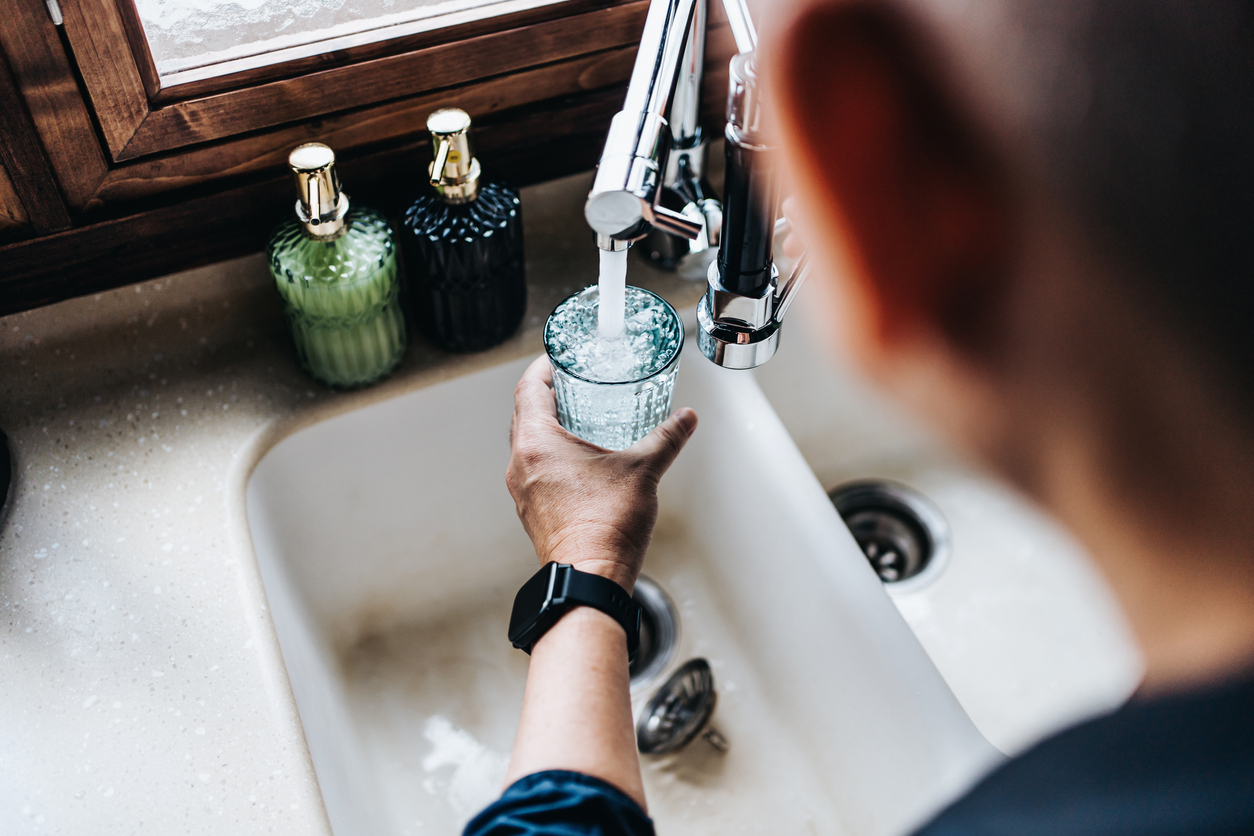This content was originally published on OldHouseOnline.com and has been republished here as part of a merger between our two businesses. All copy is presented here as it originally appeared there.
From private residential wells to city wells, the source of well water can vary greatly, which might have you wondering: what is well water exactly and is it safe? There is a lot that goes into making sure well water is safe to consume. Different types of well water require specific testing and maintenance. So before you drink from a well or use well water to clean dishes, do laundry, or shower, it’s important to understand what well water is and whether it is safe.
In this post, we will take a look at what well water is and how it is safe to drink. We’ll also explore the different types of well water and how to test it for dangerous contaminants. So if you have been pondering the question, “what is well water and is it safe to drink?“ then read on to find out.
What is Well Water?
Well water is any type of groundwater taken from an underground source, such as a well. It is not the same as tap water, which is supplied by a utility company and treated with minerals and other chemicals to regulate pH levels, remove contaminants, and keep it safe for human consumption.
Is Well Water Safe?
When groundwater is collected from wells, it can contain numerous minerals and bacteria. Well water can be treated using a variety of methods to make it safe for human humans. Common treatments include UV light, sediment filters, softeners, and cleaning with chlorine or chloramine. In some cases, filtration systems are used in combination with submersible water pumps to make sure large particles are removed from the water.
In some cases, well water should be avoided altogether due to contamination by industrial waste or sewage runoff. If you suspect your well water may contain high levels of pollutants, you should have it tested by a professional to determine if it is safe or not.
Testing Well Water
To test your well water for safety, you will need to take samples of the water at various points in time to test for the presence of E. coli bacteria and other contaminants. You can have your local health department or an independent laboratory conduct the tests on your behalf.
If your well water tests positive for contamination, you will need to take immediate steps to make sure it is safe for drinking. Household treatment systems are available that can filter out harmful bacteria and other impurities from the water. You may also want to consider using commercially available bottled drinking water until the problem is resolved. In some cases, it may be necessary to invest in a new submersible water pump and filtration system to make sure all pollutants are removed from the supply before it reaches your taps.
Well water is often an affordable and convenient way to supply households with clean drinking water. However, it is still important to regularly test your well for safety and take necessary steps to ensure your family is not exposed to contamination or other hazardous pollutants.
Conclusion
Whether you want to avoid tap water or simply prefer the taste and convenience of well water, it is important to keep in mind that it is not always safe. You can keep your family safe and healthy by testing your water and taking steps to treat it if it contains contaminants. With the right precautions, you can have peace of mind knowing your well water is safe and you are taking the necessary steps to protect your health and the environment.







